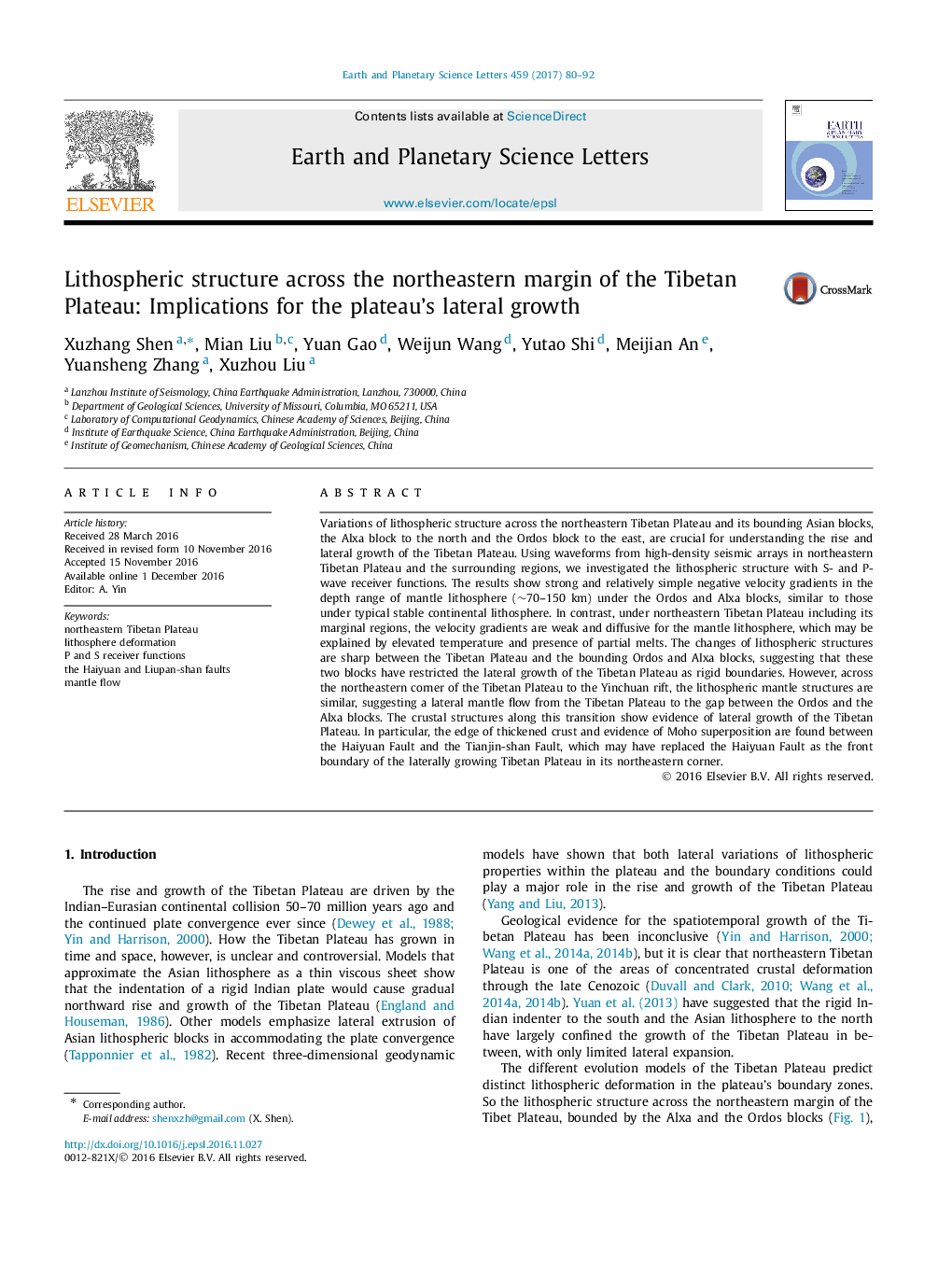| Article ID | Journal | Published Year | Pages | File Type |
|---|---|---|---|---|
| 5780128 | Earth and Planetary Science Letters | 2017 | 13 Pages |
â¢The lithosphere of NE corner Tibet was imaged with P/S receiver functions.â¢The consistent P/S receiver functions insure the reliability and stability.â¢The mantle flow from the Tibet reached the gap between Ordos and Alxa blocks.â¢Tianjin-shan Fault is the front boundary of the laterally growing Tibet.
Variations of lithospheric structure across the northeastern Tibetan Plateau and its bounding Asian blocks, the Alxa block to the north and the Ordos block to the east, are crucial for understanding the rise and lateral growth of the Tibetan Plateau. Using waveforms from high-density seismic arrays in northeastern Tibetan Plateau and the surrounding regions, we investigated the lithospheric structure with S- and P-wave receiver functions. The results show strong and relatively simple negative velocity gradients in the depth range of mantle lithosphere (â¼70-150 km) under the Ordos and Alxa blocks, similar to those under typical stable continental lithosphere. In contrast, under northeastern Tibetan Plateau including its marginal regions, the velocity gradients are weak and diffusive for the mantle lithosphere, which may be explained by elevated temperature and presence of partial melts. The changes of lithospheric structures are sharp between the Tibetan Plateau and the bounding Ordos and Alxa blocks, suggesting that these two blocks have restricted the lateral growth of the Tibetan Plateau as rigid boundaries. However, across the northeastern corner of the Tibetan Plateau to the Yinchuan rift, the lithospheric mantle structures are similar, suggesting a lateral mantle flow from the Tibetan Plateau to the gap between the Ordos and the Alxa blocks. The crustal structures along this transition show evidence of lateral growth of the Tibetan Plateau. In particular, the edge of thickened crust and evidence of Moho superposition are found between the Haiyuan Fault and the Tianjin-shan Fault, which may have replaced the Haiyuan Fault as the front boundary of the laterally growing Tibetan Plateau in its northeastern corner.
Graphical abstractDownload high-res image (118KB)Download full-size image
